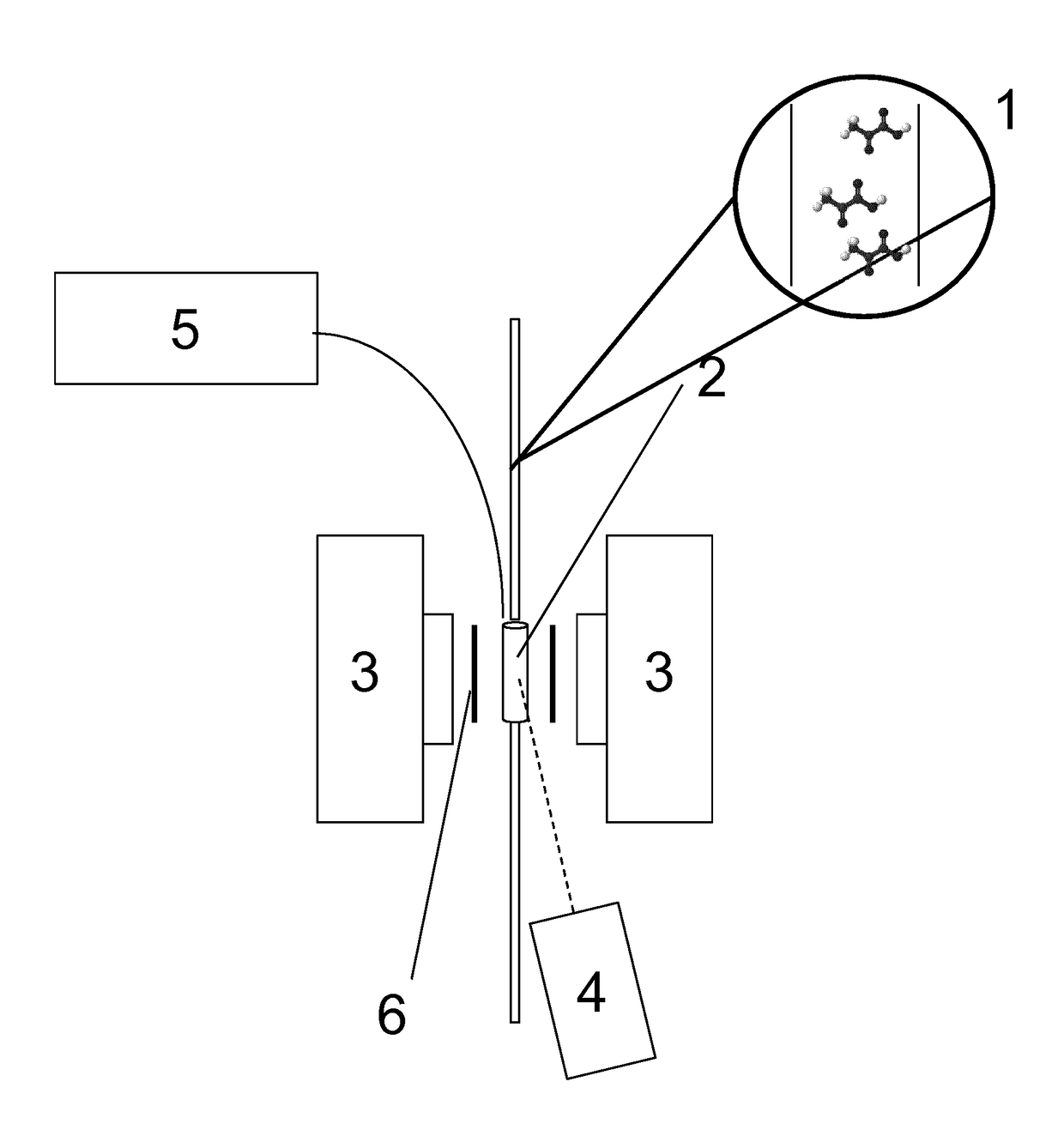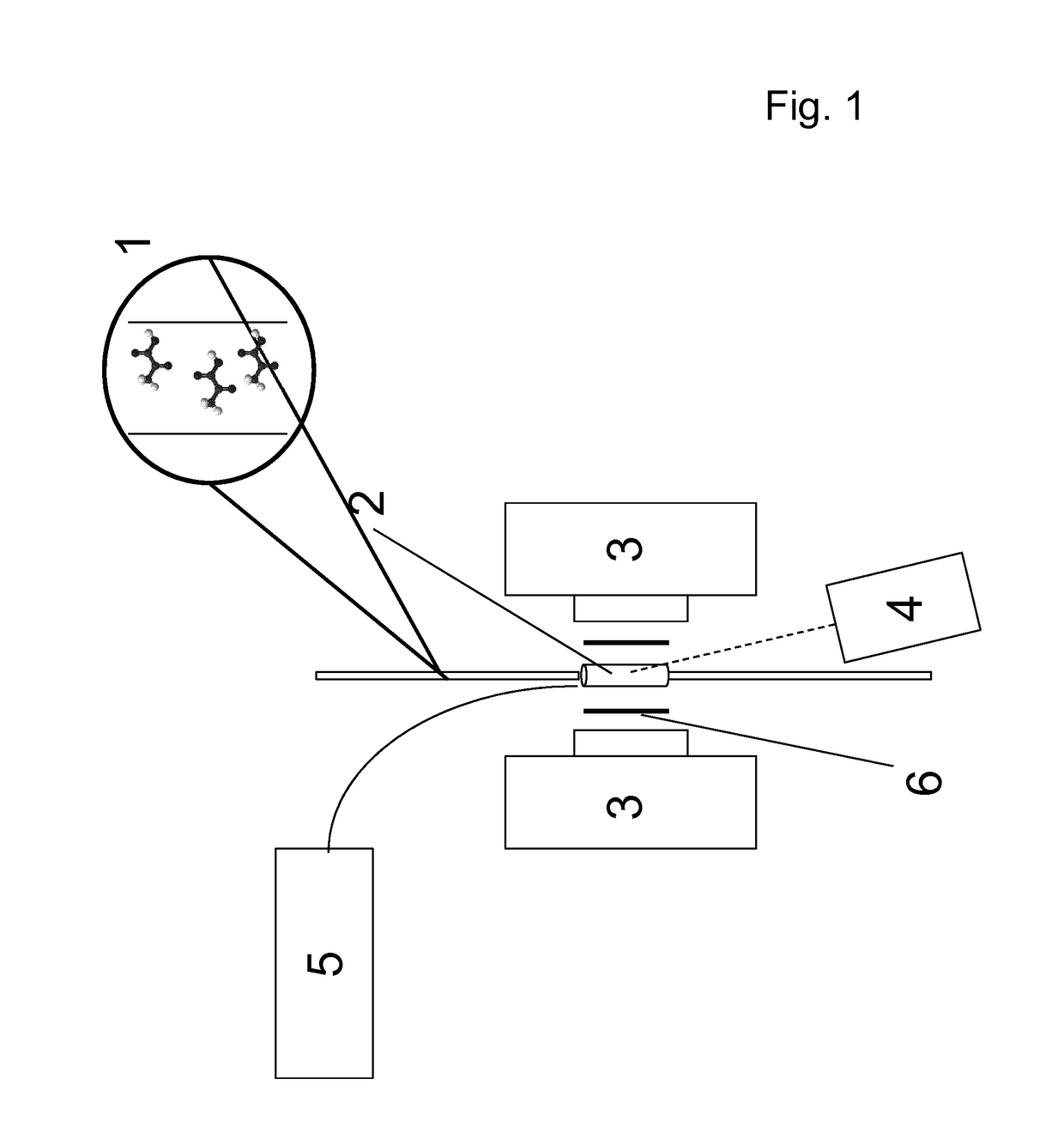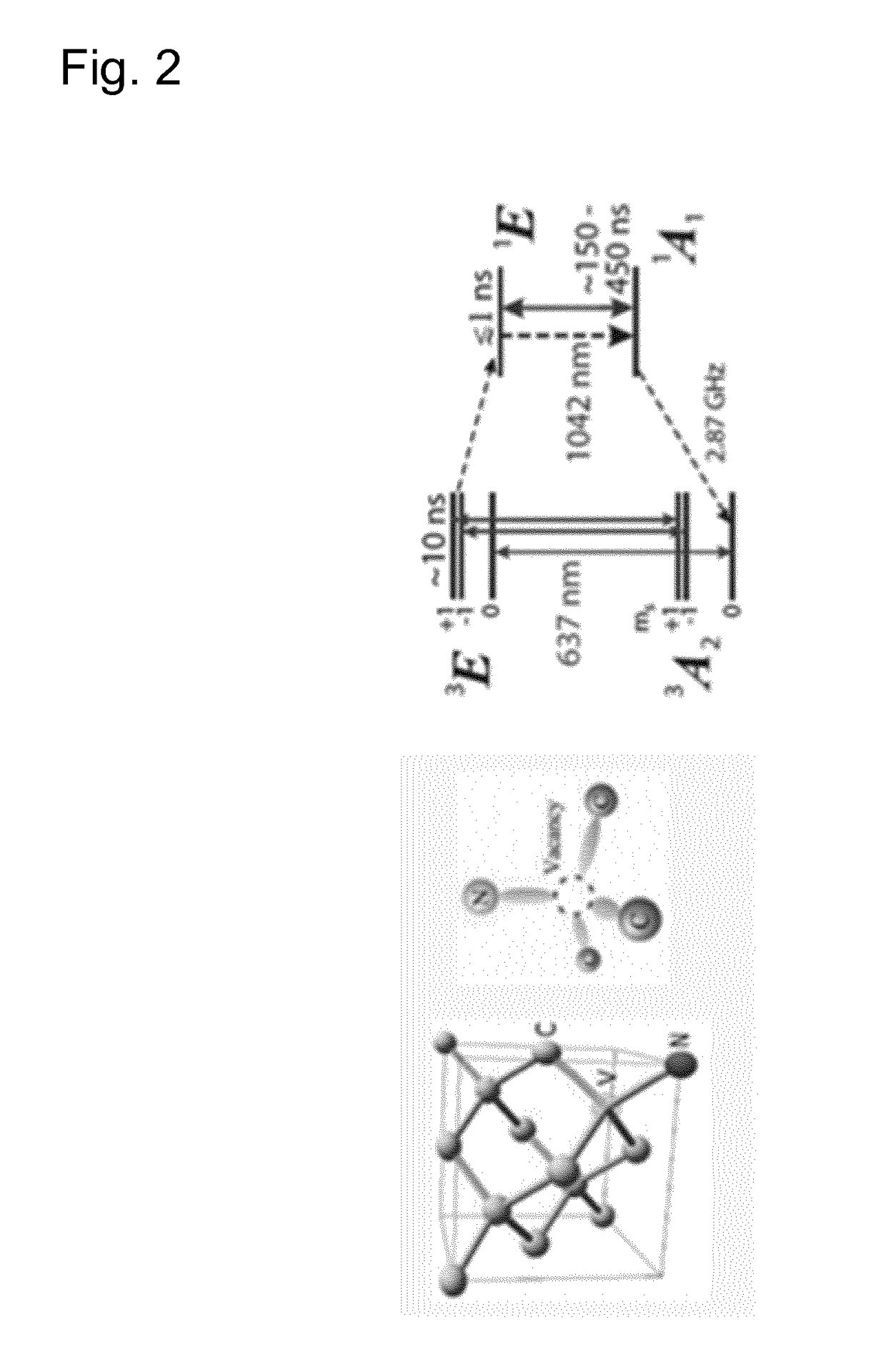Method for the hyperpolarisation of nuclear spins
- Summary
- Abstract
- Description
- Claims
- Application Information
AI Technical Summary
Benefits of technology
Problems solved by technology
Method used
Image
Examples
Embodiment Construction
[0022]Preferred features of the invention which may be applied alone or in combination are discussed below and in the dependent claims. Reference numerals in the claims have merely been introduced to facilitate reading of the claims and are by no means meant to limit the scope of the claims to certain embodiments.
[0023]Hyperpolarisation of the Nuclear Spins in Moving Particles
[0024]In a preferred method of hyperpolarisation of nuclear spins, the one or more particle(s) move relatively to a polarisation structure, wherein a polarisation of electron spins in the polarisation structure is transferred to the nuclear spins in the particle(s). The preferred particles can move relatively to the polarisation material and relatively to each other. Preferably, the particles perform a diffusional motion. For one or more of the moving particles, the characteristic correlation time of the interaction with the nearest polarisation structure electron spin due to the molecular motion (τc) is prefer...
PUM
 Login to View More
Login to View More Abstract
Description
Claims
Application Information
 Login to View More
Login to View More - R&D
- Intellectual Property
- Life Sciences
- Materials
- Tech Scout
- Unparalleled Data Quality
- Higher Quality Content
- 60% Fewer Hallucinations
Browse by: Latest US Patents, China's latest patents, Technical Efficacy Thesaurus, Application Domain, Technology Topic, Popular Technical Reports.
© 2025 PatSnap. All rights reserved.Legal|Privacy policy|Modern Slavery Act Transparency Statement|Sitemap|About US| Contact US: help@patsnap.com



